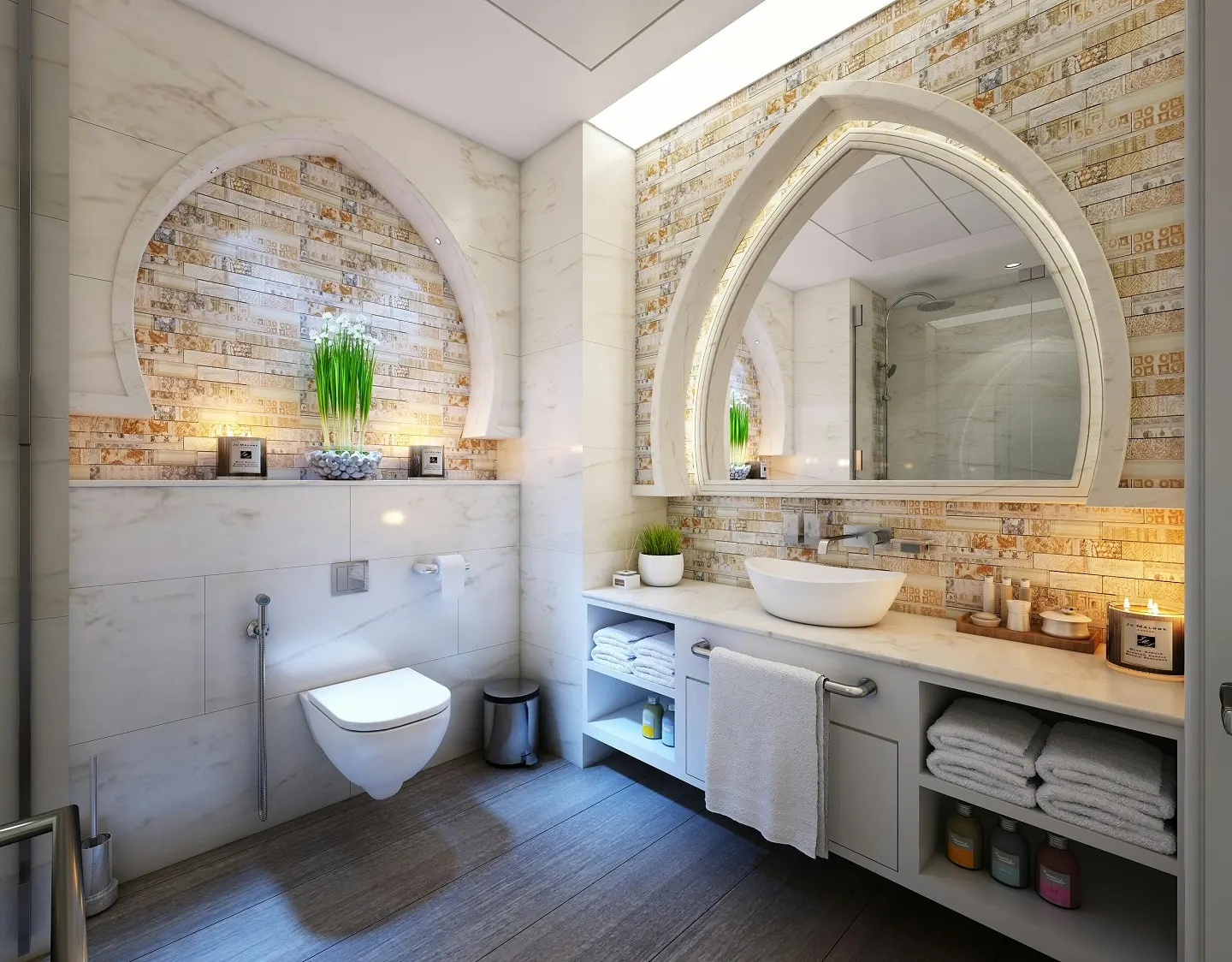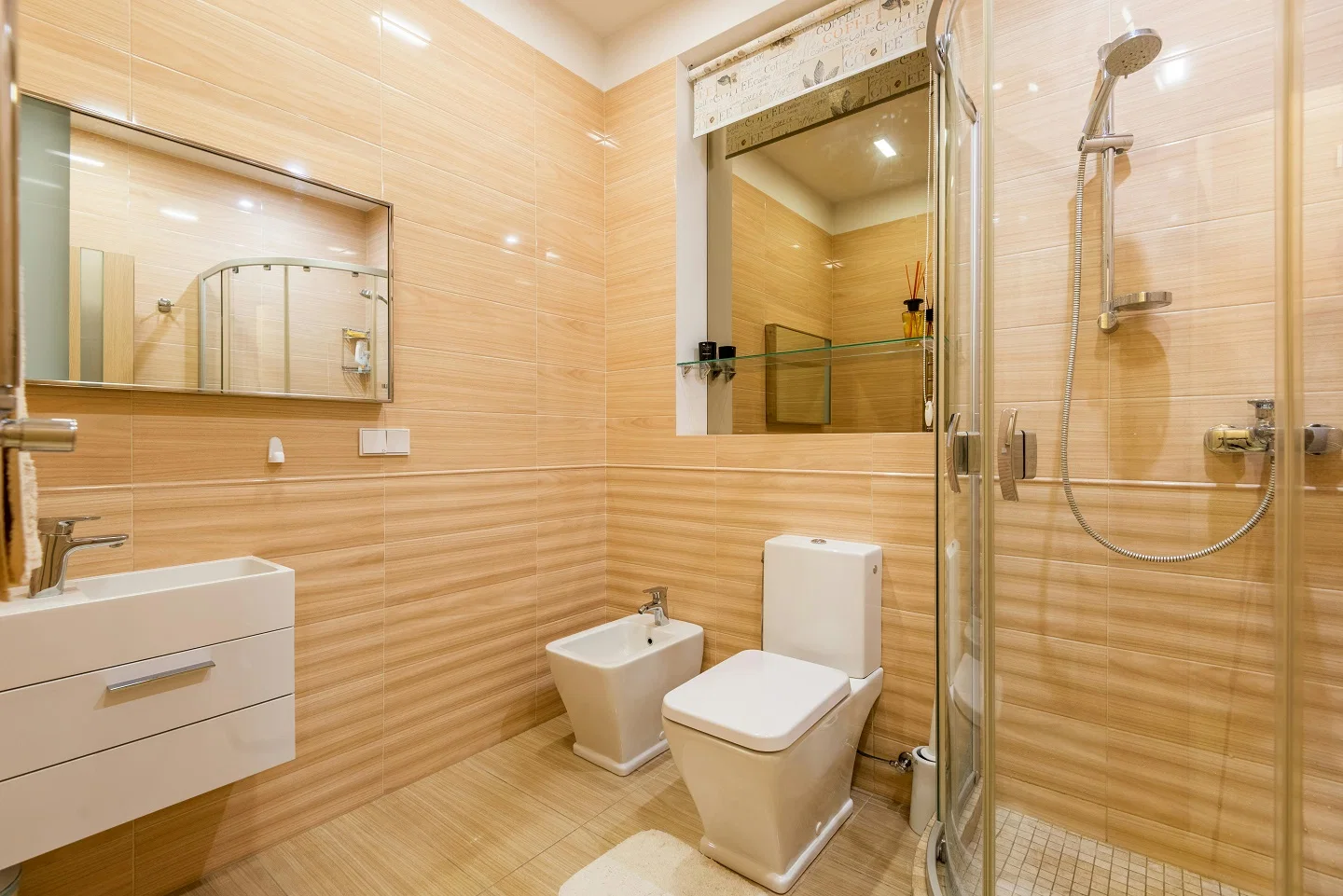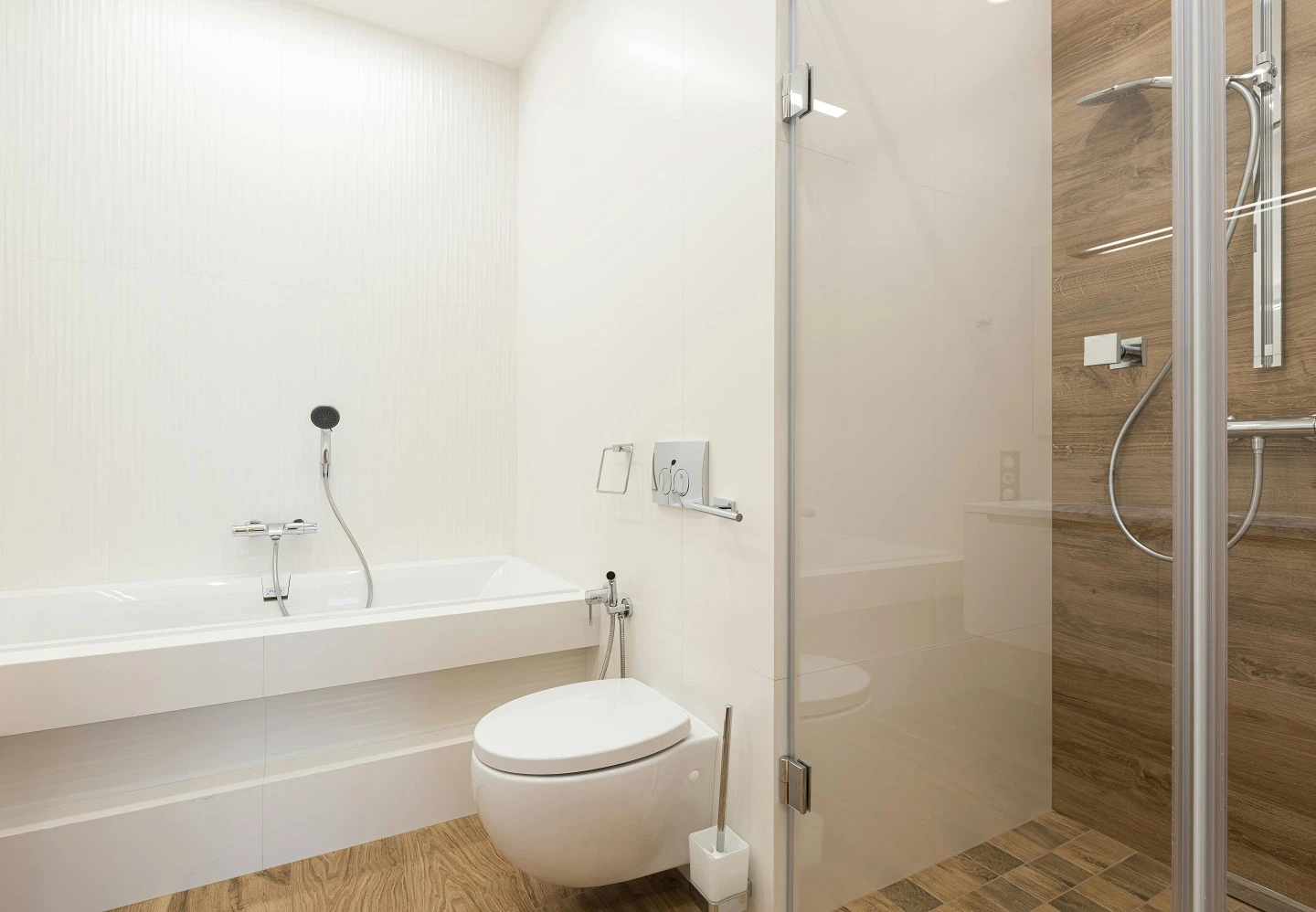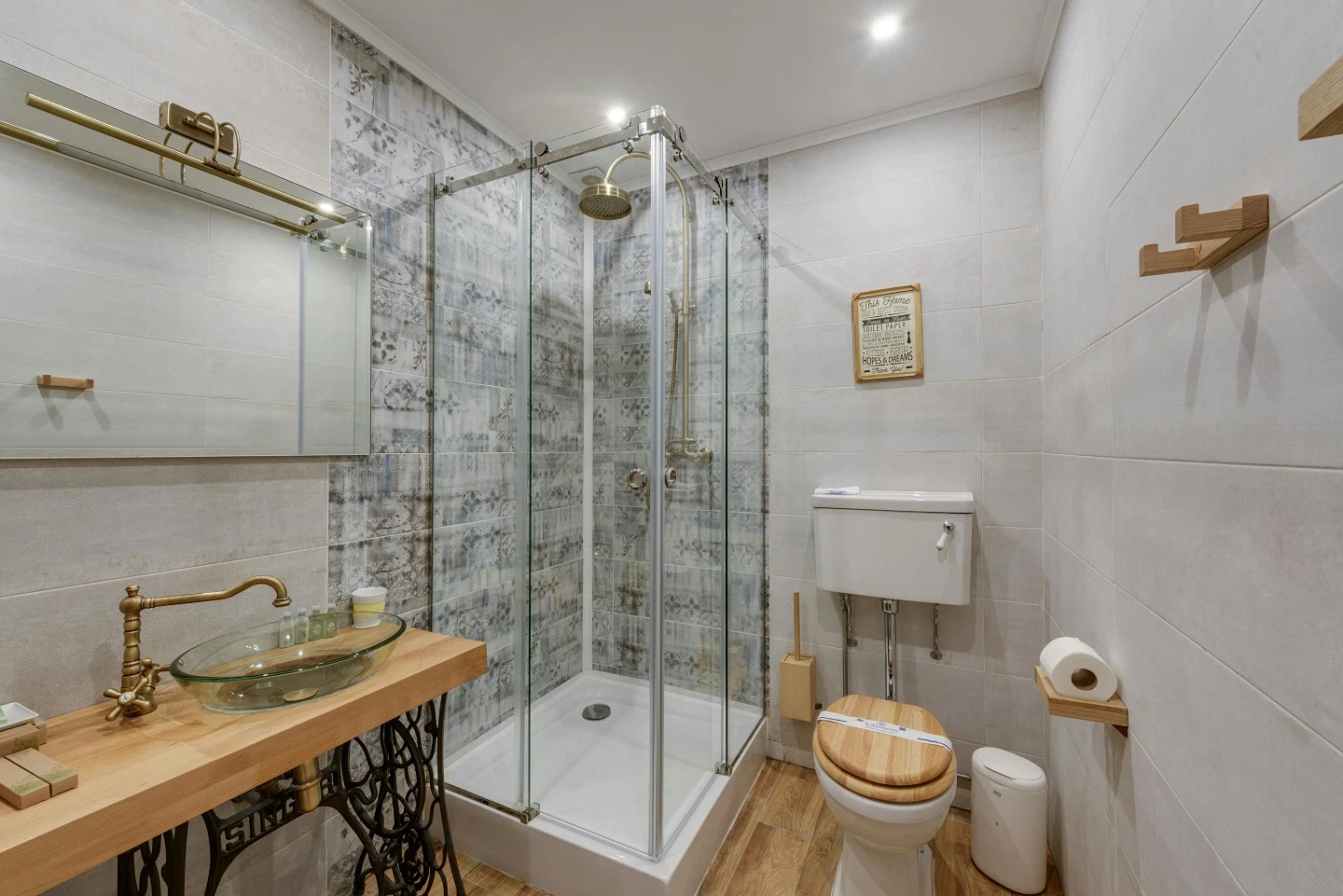Best Guide For Bathroom Toilet Design

The importance of toilet design in promoting sanitation and hygiene must be considered. It greatly influences our health and well-being by providing a comfortable and practical space for personal hygiene while preventing disease spread through proper waste management. There are numerous ways to create a modern and visually pleasing toilet design that is practical and visually appealing and goes with your bathroom décor at the same time. With careful planning and attention to detail, even the smallest toilets can be transformed into inviting, stylish spaces that leave lasting impressions.
Small Toilet Design

With more people living in urban areas and space becoming increasingly limited, small toilet design is becoming an essential consideration for architects, designers, and homeowners alike. Here are some ways to maximize space.
Space-Saving: Numerous fixtures and fittings are specifically designed to maximize the use of limited space. For instance, you can select a small bathtub or shower stall or even eliminate the bathtub for a frameless glass door walk-in shower. Another consideration is installing a corner sink or a wall-mounted toilet to free up floor space. In addition to their space-saving qualities, wall-mounted toilets and sinks offer additional benefits. They are easier to clean since there are no hard-to-reach areas around the base or pedestal, and they can be adjusted to achieve optimal comfort by setting the desired height.
Built-In Shelves or Cabinets: Storage is another important factor in designing a small toilet. Without adequate storage, a small bathroom can quickly become cluttered and disorganized. Optimal storage solutions such as built-in shelves or floating cabinets can be customized to fit specific dimensions and are designed to blend seamlessly with the bathroom’s overall aesthetic. Additionally, incorporating storage solutions into unused spaces, such as above the toilet or under the sink, can help make the most of limited space.
Lighting and Mirrors: Strategic lighting is also one of the most effective ways to make a small toilet appear larger. Consider using recessed lighting in the ceiling to provide overall illumination and adding task lighting around the vanity or mirror to brighten up specific areas. You can also experiment with different bulbs to achieve the desired effect, such as cool white or daylight bulbs, for a brighter, more open feel. Mirrors are also a powerful tool in creating the illusion of space in small toilet designs. One effective technique is to install a large mirror across from the entrance to the bathroom, which reflects light and creates the impression of a bigger space.
For a small bathroom’s minimal, simple toilet design, choose space-saving items like wall-mounted toilets and floating vanities to maximize floor space. Choose a compact toilet with a round bowl and incorporate light colors for walls, tiles, and fixtures to make the space feel brighter. Employ space-saving storage such as recessed shelves and wall-mounted cabinets. Install a large mirror to reflect light and create the illusion of a larger space while keeping decorations and accessories minimal to maintain a streamlined aesthetic.
Modern Toilet Design

Gone are the days of plain and functional bathrooms; today, contemporary toilet designs showcase a harmonious blend of aesthetics, comfort, and innovation. From sleek and minimalist to bold and artistic, modern toilet design offers a range of styles and features that elevate the overall look of the space and enhance functionality and convenience.
Stay minimal: A key aspect of modern toilet design is the integration of sleek and minimalist fixtures and finishes. This design approach prioritizes simplicity and elegance, resulting in a clean, tidy appearance that is visually pleasing and practical. Incorporating this design aesthetic into your bathroom can create a sense of calm and tranquility, allowing you to relax and unwind after a long day. Additionally, utilizing neutral tones and uncomplicated forms can create the illusion of a larger, more spacious bathroom, even if the space is limited. Furthermore, integrating crisp lines and geometric shapes into toilet fixtures and finishes can elevate an ordinary bathroom into a sophisticated, contemporary oasis.
Technology Incorporation: One of the most fascinating elements of contemporary toilet design is technology integration. For instance, smart toilets offer a range of features, including heated seats, automatic flushing, and even built-in music players. Touchless faucets are also gaining popularity, reducing the spread of germs and simplifying the cleaning process. However, it’s not just about convenience – these technological advancements also contribute to water and energy conservation.
Many smart toilets provide low-flow options that use significantly less water per flush than traditional toilets, resulting in potential savings of thousands of gallons per year in a single household. LED lighting is a prominent modern feature known for its exceptional energy efficiency, consuming up to 80% less energy than traditional incandescent bulbs.
Ease of maintenance: Contemporary toilet design prioritizes maintenance convenience, which entails creating effortlessly cleanable toilets featuring smooth surfaces devoid of crevices where dirt and grime might collect. Furthermore, modern toilets frequently incorporate self-cleaning mechanisms, minimizing the necessity for manual scrubbing and disinfection.
Above-the-Toilet Decorating Ideas
Are you tired of looking at a blank wall space above your toilet? Do you want to add some style and personality to your bathroom? The following lists creative and practical above-the-toilet decorating ideas to transform your bathroom into a stylish oasis.
One of the most overlooked areas in a bathroom is the wall space. However, it can become a valuable storage and display area with little creativity. Consider installing floating shelves to hold towels, toiletries, and decorative items. You can also use baskets or bins to organize smaller items and keep them off the counter. Consider using a ladder shelf or over-the-toilet storage unit if you need more floor space. These options provide ample storage while taking up minimal space. Another idea is to install a pegboard or grid system to hang items such as hair tools, jewelry, or plants.
Incorporating plants or greenery effectively adds a touch of nature to your bathroom. Not only do they add visual interest, but they also have air-purifying properties that can improve the overall air quality in your space. Many plants thrive in humid environments, making them perfect for bathrooms. Some great options include spider plants, peace lilies, and bamboo. You can place them on floating shelves, hang them from the ceiling, or even use them to create a living wall for a truly unique look.
Using decorative elements can add personality and style to your bathroom and instantly transform a boring space into a vibrant and lively one. When choosing wallpaper or wall decals, consider the overall aesthetic of your space and even your bathroom flooring. Opt for geometric patterns or simple stripes if you have a modern and minimalist design. For a more whimsical and playful look, go for bold prints or colorful designs. Incorporating artwork or decorative mirrors can add visual interest to an above-the-toilet space. They add a pop of color and texture and can also reflect natural light and make the space feel larger. Moreover, A gallery wall is a great way to showcase your favorite art pieces, photographs, or family mementos. You can choose a theme for your gallery wall to create a cohesive look, such as black and white photography or vintage botanical prints.
Final Thoughts
With the continuous advancement of technology, there will be noteworthy transformations in toilet design soon. For instance, toilets may become more intelligent and adaptable, incorporating automated cleaning, personalized configurations, and health monitoring capabilities. A prominent trend likely to arise is a stronger emphasis on sustainability and eco-friendliness, which may lead to using recycled water or composting systems and designs that minimize water consumption and waste generation. In summary, the evolution of toilet design persists in prioritizing functionality and user experience, encompassing innovative features and the integration of universal design principles.




Did you find what you were looking for?